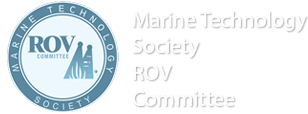The ROV system is a highly interrelated group of subsystems that, when functioning synergistically, provides an impressive subsea capability. Since the characteristics of the vehicles are multi-variant, with no unique solution, the design process is necessarily iterative. Because of this highly interdependent relationship, ROV system performance is a delicate balance of design and operational characteristic tradeoffs. The system can be arbitrarily divided into a number of major subsystems. These would generally include:
-
- Vehicle
- Tools and sensors
- Control/Display console(s)
- Electrical power distribution
- Umbilical and tether cables
- Handling system
The vehicle may also be further subdivided for convenience into functional subsystems.
The interrelationship of such subsystems is graphically illustrated in the “design spiral” shown in the following figure. For example, an operator may desire a modest increase in the speed capability of an ROV to maneuver in a current condition in a particular geographic area. The additional speed desired will result in the need for additional electrical energy and may generate the need for changes in the thruster/propulsion subsystem. Additionally, the configuration, structure, weight, control system, umbilical/tether size, tether management system, winch, handling system and power supply will all be affected.
Clearly, all of these subsystems and components are affected by what was a seemingly innocuous performance improvement desire. Thus, the designer or user/operator is well advised to be aware of the ROV system’s sensitivity to change and carefully consider the serious ramifications of contemplated changes to what may appear to be minor components. The desire for small improvements in performance or the failure of a “minor” component will often have ripple effects through the entire system. This section will discuss many of the subsystems that make up an ROV.
